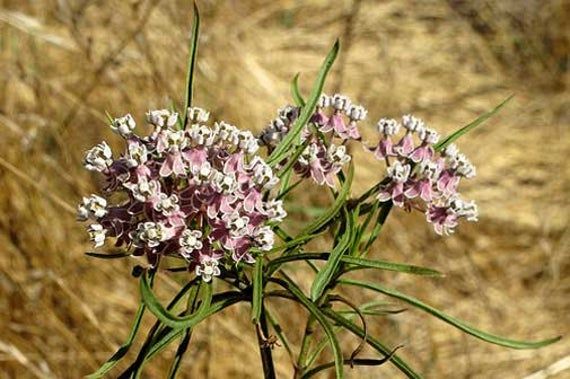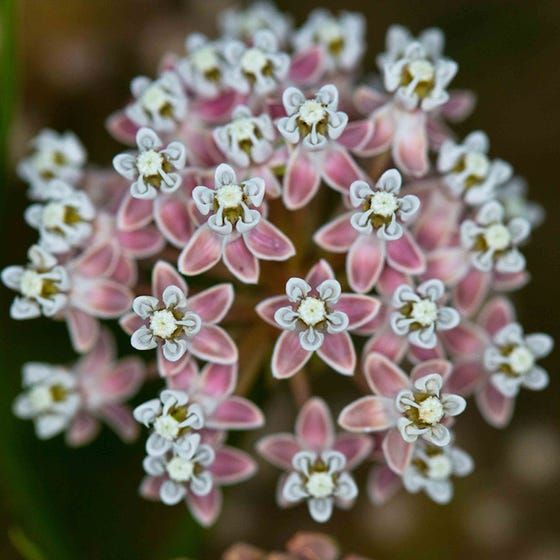Asclepias fascicularis

Asclepias fascicularis, commonly known as narrowleaf milkweed or Mexican whorled milkweed, is a remarkable perennial plant native to western North America.
With its unique flowers and importance to pollinators, this species plays a crucial role in supporting local ecosystems and biodiversity.
In this comprehensive article, we will delve into the botanical intricacies, habitat preferences, life cycle, ecological significance, conservation status, and care guidelines for Asclepias fascicularis.
Botanical Description
Asclepias fascicularis is characterized by its slender, upright stems and narrow, lance-shaped leaves that are arranged in whorls around the stem.
The leaves are typically gray-green and may have a slightly fuzzy texture. In late spring to early summer, narrowleaf milkweed produces clusters of small, fragrant flowers that range in color from pale pink to lavender.
Each flower features a distinctive structure with five reflexed petals and a central crown surrounded by a ring of hoods and horns.
Following pollination, the flowers give way to seed pods filled with numerous seeds attached to silky hairs, facilitating wind dispersal.
Habitat and Distribution
Narrowleaf milkweed is commonly found in a variety of habitats, including grasslands, meadows, chaparral, and coastal scrub, throughout the western United States and into Mexico.
It thrives in well-drained soils and is often found in open, sunny areas. Asclepias fascicularis is particularly well-adapted to dry, arid environments and is often associated with sandy or rocky soils.
Life Cycle and Phenology
As a perennial plant, Asclepias fascicularis undergoes a yearly life cycle characterized by seasonal growth and flowering.
New growth emerges in spring from underground rhizomes or from seeds. Flowering typically occurs from late spring to early summer, with the peak bloom period lasting several weeks.
During this time, narrowleaf milkweed attracts a variety of pollinators, including bees, butterflies, and other insects, with its nectar-rich flowers.
Following pollination, the flowers give way to seed pods that gradually mature and split open to release the seeds.
In colder climates, the above-ground portions of the plant may die back in winter, but the underground rhizomes persist, allowing the plant to regrow in the spring.
Ecological and Cultural Importance
Asclepias fascicularis plays a crucial role in supporting pollinator populations, including monarch butterflies, whose larvae feed exclusively on milkweed plants.
The nectar-rich flowers attract a wide range of pollinators, contributing to the health and diversity of local ecosystems.
Additionally, narrowleaf milkweed has cultural importance as a native plant species, recognized for its ecological value and role in traditional indigenous practices.

Caring for Asclepias fascicularis
Sunlight
Plant narrowleaf milkweed in a location that receives full sunlight for at least 6 to 8 hours per day.
While it can tolerate some shade, full sun encourages the best growth and flowering.
Watering
Provide moderate water levels during the growing season, allowing the soil to dry out slightly between waterings.
Once established, narrowleaf milkweed is drought-tolerant and requires less frequent watering.
Soil
Plant in well-drained, sandy or loamy soil with a neutral to slightly alkaline pH.
Amend heavy clay or compacted soil with organic matter such as compost to improve drainage and fertility.
Mulching
Apply a layer of organic mulch around the base of the plant to conserve soil moisture and suppress weed growth.
Keep the mulch several inches away from the stems to prevent rot.
Pruning
Deadhead spent flowers regularly to encourage continuous blooming throughout the growing season.
In fall, cut back the foliage after flowering to tidy up the plant and promote healthy growth.
By following these care guidelines, you can cultivate healthy and vibrant Asclepias fascicularis plants in your garden or landscape, contributing to the beauty and ecological diversity of your outdoor space while supporting pollinators and native plant communities.
Leave a Reply
You must be logged in to post a comment.